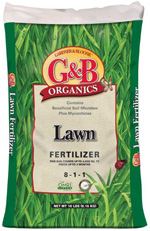|

      
|
 |
Featured Quote: "Though I do not believe that a plant will spring up where no seed has been, I have great faith in a seed. Convince me that you have a seed there, and I am prepared to expect wonders." |
 |
|
Labor Day, observed on the first Monday of September, celebrates the workers of our country, as well as the social and economic achievements of the labor movement. It started off small, with local ordinances in the early 1880's in various cities across the country. Oregon was the first to celebrate the holiday statewide in 1887. By 1894, there were 28 states that celebrated Labor Day, and in that year Congress passed an act declaring that the first Monday in September would be a national holiday. While always controversial, labor unions contributed a good deal to the welfare of the American worker. The 40-hour work week, the weekend, minimum wage, and workplace safety laws were all hard-fought triumphs of the labor movement. With or without unions, the contribution of laborers to the development and advancement of this nation is unquestionable. Whether they work with wood, iron, tile, glass, or soil, their products are all around you. Every road, building, wall, window, appliance, or piece of furniture around you was made by someone. Labor Day gives us a chance to tip our hats to them. |
We will be closed on Monday in honor of Labor Day. We will resume our normal store hours on Tuesday, September 4th. |
 |
|
In the Kitchen Garden:
The Flower Garden:
The Greenhouse and Conservatory:
|
 |
|
When I was a kid, the arrival of Indian summer was the last summer hurrah! It was still light enough to play outside after dinner, and warm enough to wear shorts. Even though school had begun, you still had a couple of weeks of warm summertime fun. Well, now I realize that it was also a couple more weeks of summertime flower color for my parents to enjoy in their gardens! Somehow, I think they must have planned ahead to ensure that the gardens were beautiful. That's right. Now is the time to tuck into your garden beds and patio paradise containers some of your favorite late summer and fall blooming perennials and shrubs. You may be the type of gardener who has a complete plan of colors, sizes and shapes in mind. Or you might be a gardener that loves just to collect plants of all colors, sizes and forms. You know who you are and what your style is. There are plenty of late summer and autumn bloomers to choose from. Our plant selection is a veritable treasure chest of Indian Summer colors. Come into the garden center and begin choosing today. Don't forget to pick up a good soil amendment. Oh yes, and to promote those non-stop blooms, feed them regularly. Then sit back on a lounge chair or hammock--and enjoy your Indian summer garden in full bloom! |

|
By Tamara Galbraith Here's a basic primer on how to divide some of your perennials. Don't neglect this fall duty; it's nature's way of giving you free plants! Just like pruning, dividing should be done in the season opposite of planting, i.e., spring flowering = fall dividing and vice versa. Try to plan your dividing project for a cloudy, slightly cooler day with a good chance of rain thereafter. Most perennials should be divided every three to five years. However, some, like columbines, poppies and euphorbias shouldn't ever be divided, even if they start to clump. Don't divide woody plants like lavender, rosemary or the bigger artemesias either. Before starting your division project, thoroughly water all plants to be divided a day or two before you dig in. Likewise, prepare planting holes for the new divisions so they aren't languishing (and drying out) above ground for too long. You can also pot up divisions to build up size, overwintering pots in a protected environment. Make sure your tools are clean and, more importantly, very sharp. Use a sharp pointed shovel or spading fork to dig down deep on all four sides of the plant, about 4 to 6 inches away from the plant. Pry underneath and lift the whole clump to be divided. If the plant is very large and heavy, you may need to divide it right in the ground with a sharp shovel before lifting the new sections out. Shake or hose off loose soil and remove dead leaves and stems. This will help loosen tangled root balls and make it easier to see what you are doing. Depending on the root system, divide your plants as follows: • Spreading root systems that have just a mess of disorganized roots include such plants as asters, bee balm, lamb’s ear, purple cornflowers and many other common perennials. Some can get out of control unless you divide them frequently. Luckily, they can usually can be pulled apart by hand, or cut apart with shears or knife. Divide the plants into clumps of three to five vigorous shoots each. Toss the center of the clump into the compost pile if it looks like it's run its course and is weaker than the outside edges. • As the name suggests, clumping root systems originate from a central clump with multiple growing points and usually have thick fleshy roots. This group includes astilbes, hostas, daylilies and many ornamental grasses. A sharp knife is handy with these guys, as it is often necessary to cut through the thick crowns to separate the divisions. You can also pry apart these roots with two digging forks held back to back. Make sure at least one developing eye or bud exists on each division. • Rhizomes are stems that grow horizontally at or above the soil level. Irises are the most common perennial with this type of root system. Divide irises any time between a month after flowering until early fall. Cut and discard rhizome sections that are one year or older and/or showing signs of disease and insect damage. Iris divisions should retain a few inches of rhizome and one fan of leaves, trimmed back halfway. Replant with the "shoulders" of the rhizome showing above soil level. • Tuberous roots, like dahlias, should be cut apart with a sharp knife. Every division must have a piece of the original stem and a growth bud attached. After division they can either be replanted or stored for spring planting. Silly as it sounds, dividing is probably my favorite fall gardening chore. When you dig up one daylily and all of a sudden it becomes four...well, for an avid gardener, that's like a magic show and a birthday gift all rolled into one! |
 |
|
How often should I add mulch to my garden and how much should I use? Answer:
|

|
What You'll Need:
Step by Step:
|
 |
Written content © Garden Partners LLC, or respective authors. All Rights Reserved. Privacy Policy. All written content contained in this site is protected by United States copyright law and may not be reproduced, distributed, transmitted, displayed, published, or broadcast without prior written permission of Garden Partners, LLC. You may not alter or remove any trademark, copyright or other notice from copies of the content. |


